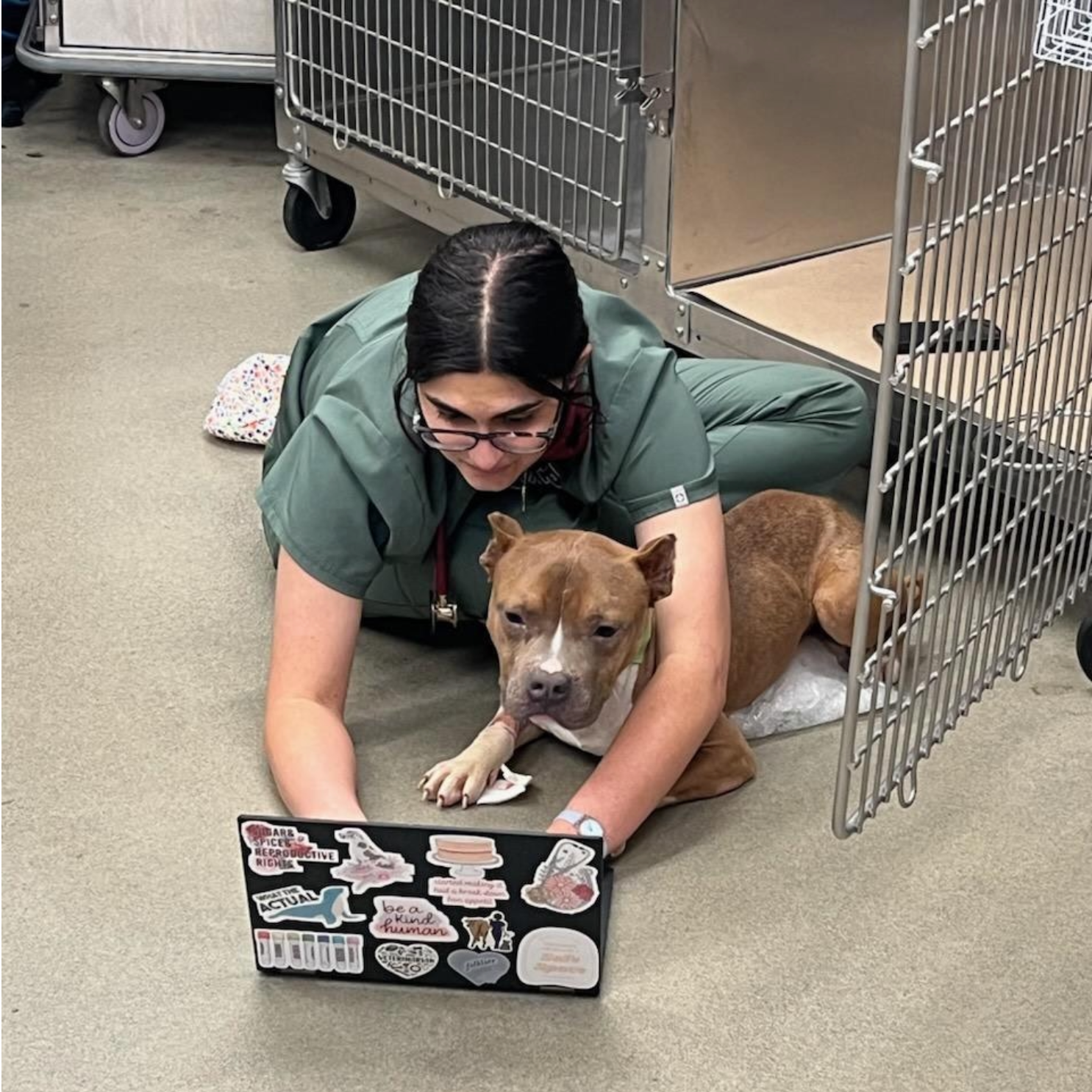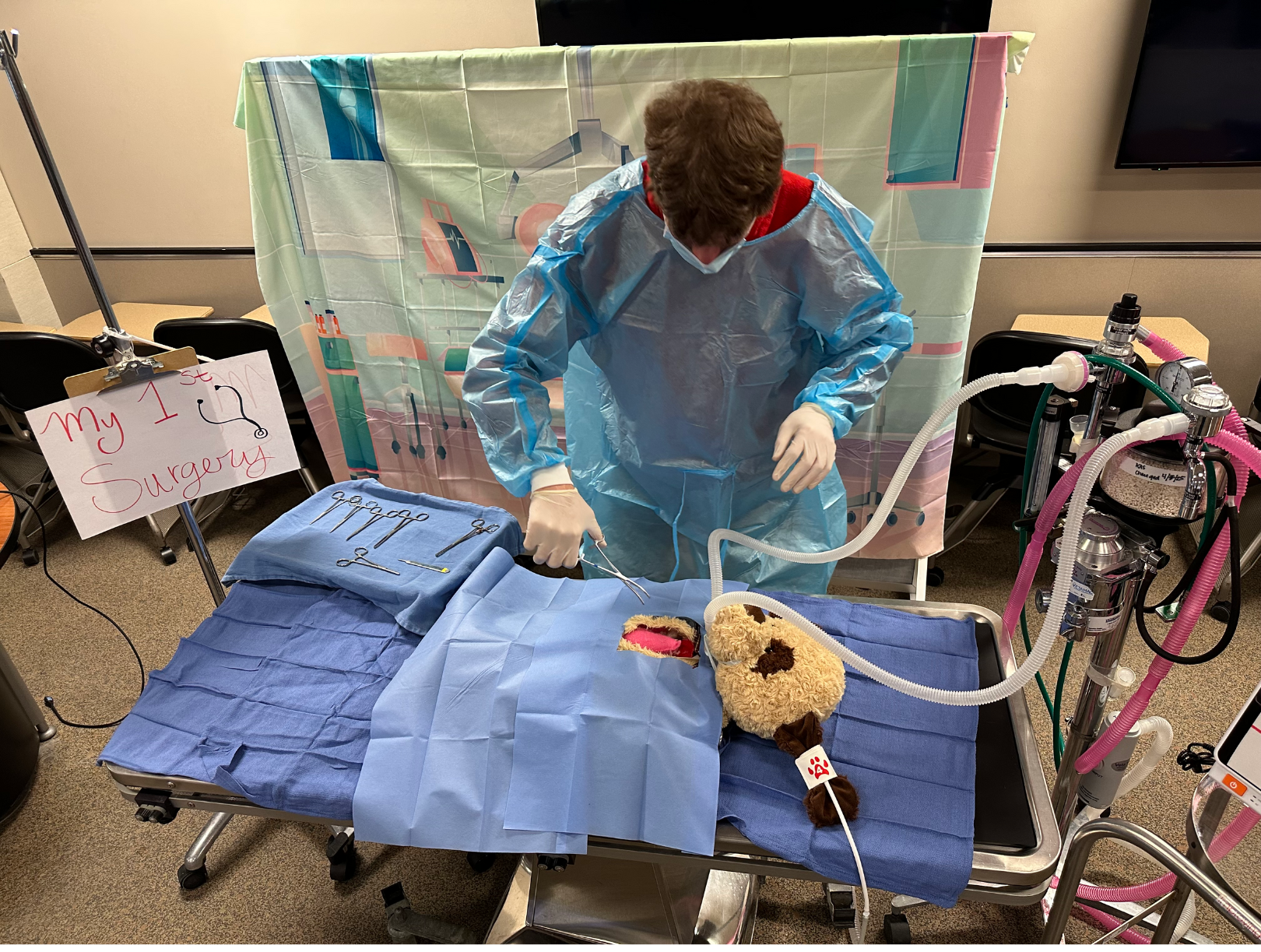Fun Facts About Dogs

Fun Facts About Dogs!
Dogs are the most popular pet on the planet!
A third of ALL households around the world have a dog. These playful, friendly, loyal animals make great companions.
Dogs can learn over 160 words and gestures!
Your dog is super smart and easy to train. They are actually as smart as two-year-old children. While most dogs can learn around 160 words or gestures there are actually some breeds of dog that can learn up to 250 words and gestures!
Dog noses are at least 40x more sensitive than ours!
Dogs have an incredible sense of smell that not only helps them explore the world but can also be used to help people. Some working dogs are trained to use their super senses to sniff out explosives and illegal goods, find people buried under snow after an avalanche or alert humans to potentially dangerous health issues. Some dogs can detect the signature odor of different cancer and have been shown to detect early colon cancer, prostate cancer, breast cancer and melanoma by sniffing people’s skin, body fluids or breath
Many dogs work as assistance dogs to help humans!
Many dogs are trained to work as guide dogs, helping blind people get around safely. Others are assistance dogs, who keep their owners calm and safe, while some brave hounds are search and rescue dogs, who help human rescuers save people from danger.
Dogs only sweat from their paws, and have to cool down by panting.
Your four-legged friend doesn’t sweat like you do. They actually sweat through their paws.
They can keep cool in the summer by panting and sweat through their paws.
Dogs can be right or left-pawed!
Like humans, most dogs have a dominant hand – or in their case, paw! To figure out which one it is, you can conduct a simple science experiment…Watch your dog moving from standing still to walking forwards. Do they start walking with their left leg, or their right leg? Watch several times, noting down the starting leg each time, and see if there’s a pattern. Many dogs will often lead with the same leg – their dominant one!
Puppies of all breeds are completely deaf when they are born.
Puppies are born deaf. It normally takes them up to three weeks to get their hearing and once they do they can already hear much better than humans.
Did you know that your dog doesn’t have fingerprints but have noseprints!
Just like your fingerprint is unique to you, a dog's noseprint is entirely their own and there is no other like it. The pattern of bumps and grooves in the skin, and the shape of the nostrils (called nares), are different for every dog. Even siblings have different nose patterns. Some phone apps have been developed for the purpose of locating lost dogs that also use technology to analyze dog nose patterns.
Greyhounds have incredible speed and can run almost as fast as a cheetah!
While cheetahs can reach 70 m/h speeds, they can only run this fast for about 30 seconds. Greyhounds on the other hand can keep a steady pace of 45 m/h for over 7 miles before they need to stop.
Dogs actually see color differently than we do.
While we commonly refer to dogs as colorblind this isn't exactly true. They can still see some colors like blue and yellow but not reds and greens. It turns out that dogs possess two types of color-sensing receptors in their eyes called cones. This makes them similar to most mammals—including cats, cattle and pigs— while humans have three cones. To really understand how dogs see the world, we need to move beyond color. While a green or red ball lying on grass would might not stand out easily to your dog, they will pick up other features such as movement, shape and the way the object reflects light. If you’re really trying to imagine the world through the eyes of your dog, you should picture everything a lot blurrier. Most dogs have 20/75 vision, meaning that they must be 20 feet away from an object to see it as well as a human with clear vision who is standing 75 feet away. But unlike humans, who see very poorly in low light, dogs have evolved to see well in both daytime and nighttime conditions because they have more rods in their eyes, the cells responsible for night vision.
The tallest dog in the world was taller than most people.
Zeus was a Great Dane who stood over 7 feet tall on his hind legs. He could drink from the kitchen sink and even caused his family to need a larger vehicle to fit him better.
Australian shepherds actually don’t come from Australia!
Australian shepherds are actually native to the Western States of the US like California, Colorado, Wyoming and Idaho where they would help herding large flocks of sheep grazing.
All Dalmatians are actually born completely spotless!
Although dalmatians are known for their striking spotted coats, they are actually born completely white and develop spots from two to four weeks old. The number and position of spots are actually set from birth, their skin is pigmented black or liver in the positions where the spots will go on to form in the hairs that grow from these skin cells. While they all are white at birth, breeder can check the color of their underlying skin and see at a few days of age if they will have black- or liver-colored spots.
Dogs actually have three eyelids!
While they have the same two types of eyelids that we have, dogs actually have a third eyelid that is an extra protective layer to help care for their eye and keep it moist.
1.) Dogs are the most popular pet on the planet!
A third of ALL households around the world have a dog. These playful, friendly, loyal animals make great companions.
2.) Dogs can learn over 160 words and phrases!
Your dog is super smart and easy to train. They are actually as smart as two-year-old children. While most dogs can learn around 160 words or gestures there are actually some breeds of dog that can learn up to 250 words and gestures!
3.) Dog noses are 40x more sensitive than ours!
Dogs have an incredible sense of smell that not only helps them explore the world but can also be used to help people. Some working dogs are trained to use their super senses to sniff out explosives and illegal goods, find people buried under snow after an avalanche or alert humans to potentially dangerous health issues.
Some dogs can detect the signature odor of different cancer and have been shown to detect early colon cancer, prostate cancer, breast cancer and melanoma by sniffing people’s skin, body fluids or breath
4.) Many dogs work as assistance dogs to help humans!
Many dogs are trained to work as guide dogs, helping blind people get around safely. Others are assistance dogs, who keep their owners calm and safe, while some brave hounds are search and rescue dogs, who help human rescuers save people from danger.
5.) Dogs only sweat from their paws and have to cool down by panting!
Your four-legged friend doesn’t sweat like you do. They actually sweat through their paws.
They can keep cool in the summer by panting and sweat through their paws.
6.) Dogs can be right or left pawed!
Like humans, most dogs have a dominant hand – or in their case, paw! To figure out which one it is, you can conduct a simple science experiment…Watch your dog moving from standing still to walking forwards. Do they start walking with their left leg, or their right leg? Watch several times, noting down the starting leg each time, and see if there’s a pattern. Many dogs will often lead with the same leg – their dominant one!
7.) Puppies of all breeds are completely deaf when they are born!
Puppies are born deaf. It normally takes them up to three weeks to get their hearing and once they do they can already hear much better than humans.
7.) Your dog doesn't have fingerprints, it has noseprints!
Just like your fingerprint is unique to you, a dog's noseprint is entirely their own and there is no other like it. The pattern of bumps and grooves in the skin, and the shape of the nostrils (called nares), are different for every dog. Even siblings have different nose patterns. Some phone apps have been developed for the purpose of locating lost dogs that also use technology to analyze dog nose patterns.
8.) Greyhounds have incredible speed and can run almost as fast as a cheetah!
While cheetahs can reach 70 m/h speeds, they can only run this fast for about 30 seconds. Greyhounds on the other hand can keep a steady pace of 45 m/h for over 7 miles before they need to stop.
9.) Dogs see color differently than we do!
While we commonly refer to dogs as colorblind this isn't exactly true. They can still see some colors like blue and yellow but not reds and greens. It turns out that dogs possess two types of color-sensing receptors in their eyes called cones. This makes them similar to most mammals—including cats, cattle and pigs— while humans have three cones. To really understand how dogs see the world, we need to move beyond color. While a green or red ball lying on grass would might not stand out easily to your dog, they will pick up other features such as movement, shape and the way the object reflects light. If you’re really trying to imagine the world through the eyes of your dog, you should picture everything a lot blurrier. Most dogs have 20/75 vision, meaning that they must be 20 feet away from an object to see it as well as a human with clear vision who is standing 75 feet away. But unlike humans, who see very poorly in low light, dogs have evolved to see well in both daytime and nighttime conditions because they have more rods in their eyes, the cells responsible for night vision.
10.) The tallest dog in the world was taller than most people!
Zeus was a Great Dane who stood over 7 feet tall on his hind legs. He could drink from the kitchen sink and even caused his family to need a larger vehicle to fit him better.
10.) Australian Shepherds don't actually come from Australia!
Australian shepherds are actually native to the Western States of the US like California, Colorado, Wyoming and Idaho where they would help herding large flocks of sheep grazing.
11.) Dalmatians are born spotless!
Although dalmatians are known for their striking spotted coats, they are actually born completely white and develop spots from two to four weeks old. The number and position of spots are actually set from birth, their skin is pigmented black or liver in the positions where the spots will go on to form in the hairs that grow from these skin cells. While they all are white at birth, breeder can check the color of their underlying skin and see at a few days of age if they will have black- or liver-colored spots.
12.) Dogs actually have three eyelids!
While they have the same two types of eyelids that we have, dogs actually have a third eyelid that is an extra protective layer to help care for their eye and keep it moist.


